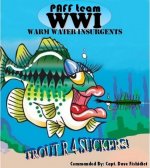afishinado
Moderator
Staff member
..since the weather has turned hot and most streams are low.
Use your best judgement, common sense, and your thermometer if you choose fish for trout.
There are a few tailwaters and spring creeks that may be okay to fish, but many of the wild trout streams in PA are running low and warm.
Yes, the trout are still in there, but many are in survival mode clinging to spring seeps and/or slightly cooler tribs to survive.
Most of us on here practice C&R to preserve trout and allow us to enjoy the sport year round. So why not think about giving the trout a break for a month or two when conditions are poor, so we all can enjoy fishing the other ten months of the year.
No need to stay home, though....dust off your heavier rod and tackle and try your luck with smallies or other warmwater fish.
Smallies are not all colored up like trout, but hey, bronze is a color too!
Use your best judgement, common sense, and your thermometer if you choose fish for trout.
There are a few tailwaters and spring creeks that may be okay to fish, but many of the wild trout streams in PA are running low and warm.
Yes, the trout are still in there, but many are in survival mode clinging to spring seeps and/or slightly cooler tribs to survive.
Most of us on here practice C&R to preserve trout and allow us to enjoy the sport year round. So why not think about giving the trout a break for a month or two when conditions are poor, so we all can enjoy fishing the other ten months of the year.
No need to stay home, though....dust off your heavier rod and tackle and try your luck with smallies or other warmwater fish.
Smallies are not all colored up like trout, but hey, bronze is a color too!





